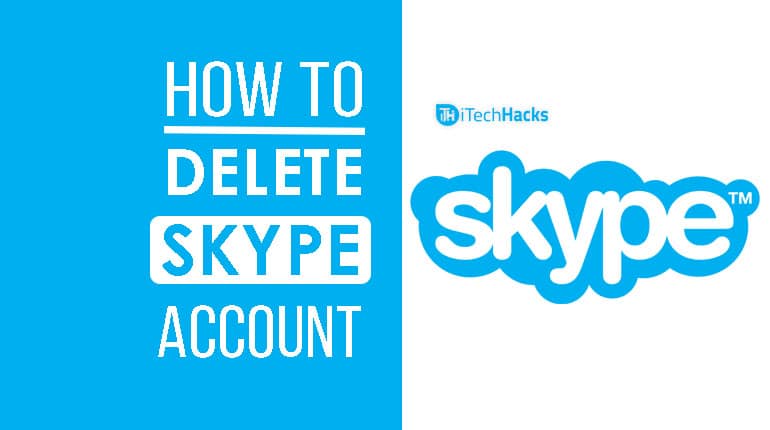
I also checked from the SfB client itself, and yes, (not surprisingly) same result: I ran the command Get-CSUserServicePolicy and found out that UcsAllowed was set to true. Now the question was, WHICH setting specifically? Now I honestly don’t remember what I googled to find this, but in the end it got me to Well, as my integration is controlled “by my administrator” (which would be myself thank you very much), it got me thinking that it HAS to be a server setting.

This setting is different in the SfB client. So, was my solution setting this setting to “None”? You’d think so.
#How to delete skype account 2017 windows
It doesn’t use either the Windows Address Book or the Outlook Contact list. When you select None, the Skype for Business search feature returns contacts only from the global address list. When you select Microsoft Exchange or Microsoft Outlook, the Skype for Business search feature uses the Microsoft Outlook Contact list as a source of contacts, in addition to the global address list. In Personal options, under Personal information manager, select either Microsoft Exchange or Microsoft Outlook or None from the drop-down list. You specify how Skype for Business interacts with other Office programs. Many, MANY Google searches later got me to Īnd there it was. This got me thinking about the Exchange Lync relationship. My disabled users are visible in Lync’s Address Book. What now? I’m ok with just ignoring the event in Event Viewer, but I still have the same problem. We still saw disabled users in Lync’s Address Book 😦 More information about UCS in the next chapter. It SHOULD however also work with Lync/SfB if you are using the Unified Contact Store, UCS. The above PowerShell-trick solved the problem on the Outlook/Exchange-side. This HiddenFromAddressListsEnabled –method was applied at an earlier stage, as we had “problems” with Outlook / Exchange showing disabled users in Global Address List (GAL). There are many different flavors of this command, but the one we’re using is something like the one found at (and the answer “I use this as a daily scheduled task to hide users disabled in AD from the Global Address List”). Method 2: HiddenFromAddressListsEnabled PowerShell command Source: (you can find this information in many other sources as well…) “As long as “Objects not indexed that should be” and “Abandoned Objects” are zero, the database is okay.” I did run the Debug-csAddressBookReplication and “my” objects were zero. Then again if you Google the message you’ll soon notice that this error is nothing to worry about: Well, what command did I just run? Did it help? No. Run Update-CsAddressBook to synchronize all accounts. Users are not indexed in the database that should be. Better turn to my old friend Event Viewer. I could see the “old” users which aren’t enabled in AD nor on the Lync Server. I tried googling but all I could come up with was “Update-CsAddressBook” and so forth. You think your users wouldn’t show up when searching in Lync (Address Book) if they are no longer activated on Lync Server (and also has the –HiddenFromAddressListsEnabled flag, see next chapter). Get-CsAdUser -ResultSize Unlimited | Where-Object | Disable-CsUser


Import-Module ‘C:\Program Files\Common Files\Microsoft Lync Server 2013\Modules\Lync\Lync.psd1’ The PowerShell “script” itself looks like this:

A little addition to the above links is that I now use this script from a Scheduled Task: This worked just fine and I got all the accounts removed from the Lync Server. Here are a couple of examples that will disable users on the Lync Server if they are disabled in Active Directory: This idea led me to some PowerShell scripts. Method 1: Disable AD-disabled users on Lync/SfB Server Hell, you might even need to use all the methods combined 🙂 One method might work for someone, and another method might work for someone else. I’ll now present MANY different ways to get rid of the unwanted users in the Lync/SfB Address Book. In plain English – users should be disabled if their AD account is also disabled. My concern wasn’t about the fact that the users still could use Lync however, it was more about the fact that they are “hanging around” like ghosts on the Lync Server for no good reason. This procedure is by no means automatic, and If you disable a user in AD they can still use Lync (at least for some time).
#How to delete skype account 2017 how to
I started the whole project with some googling on how to (automatically) remove AD-disabled users from Lync (SfB) Server. Well, this was a bit of a nightmare to debug.


 0 kommentar(er)
0 kommentar(er)
